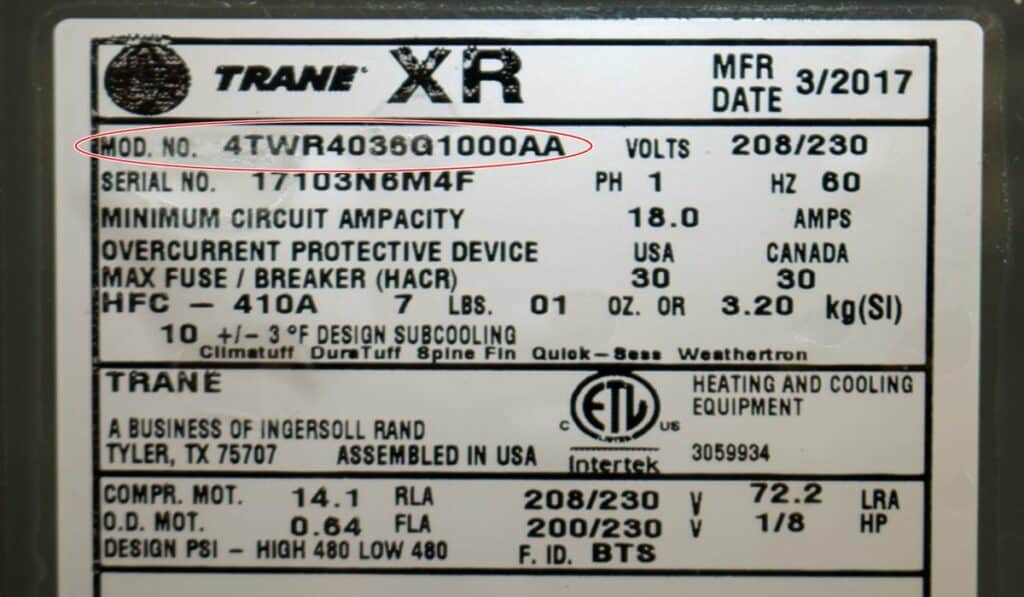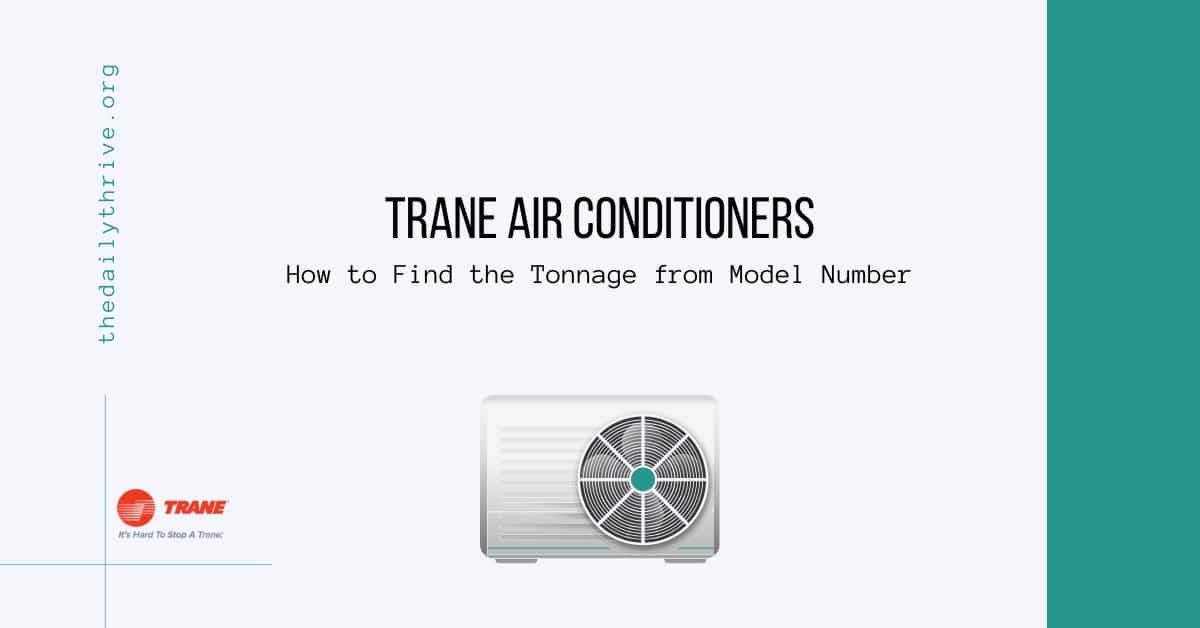Finding the Trane Tonnage of your heating and air conditioning system is needed when you decide to replace your Trane AC unit. Error in doing AC size analyzing can result in oversized and/or undersized. This is bad because it will cause problems in the future. We will help you to find the size of your trane tonnage from model number unit.
Trane tonnage is used to determine the cooling capacity of your AC unit. In determining the capacity of heating and air conditioning system, the term btu (British Thermal Units) is used.
One ton of cooling is equivalent to 12,000 Btu/hr. This means the rate of heat transfer needed to freeze 1 ton of water in 24 hours. With a simple understanding of BTU to tonnage then interpreting the trane tonnage from model numbers will be easy.
Trane uses model numbers incorporate the BTU equivalent into their unit model numbers, or reference the tonnage. They have model numbers that tell everything from the size of the unit to whether the system has had major upgrades.
Trane Model Number Location
Finding the Trane model number is very easy if you have a new unit. Start by looking the model number in your Trane user’s information manuals or any other book that came after installation.
Be aware, as this sometimes can result in incorrect models. Most often the user’s manual/guide is produced to include several different Trane HVAC models.

The easiest way to look Trane model number search is on the AC unit itself. Go to the condensing unit on the outside and look for the data plate stamped on the actual side of the compressor. Find the model number. Within this string of letters and numerals, you should find an even, two-digit number.
The capacity in tons of a Trane outdoor unit can be determined by dividing the 7th and 8th digit of the model number by 12.
So if the model number is #4TTX4036A1000AA, take 36 and divide by 12, equaling 3 tons. Lets decode the trane model number from the example above:
- First letter.
The model number starts with 4. This number represents the type of refrigerant the unit uses. 2 stands for R-22 and 4 stands for R410A. - Second letter.
T stands for Trane. - The third letter represents the product type.
T stands for split cooling. - The fourth letter equals the product family.
- The fifth number is for unit’s Seasonal Energy Efficiency Ratio.
A single number represents the SEER: 0 = 10, 1 = 11, 2 = 12, 3 = 13, 4 = 14, 5 = 15, 6 = 16, 7 = 17, 8 = 18, 9 = 19. - The six letter.
Zero indicates the system’s connections are brazed or soldered. - The seven and eight number indicate size in tonnage.
How many BTUs the unit produces in thousands. For example: 36 = 36,000 BTUs. - The nine letter represents the major changes.
Any type of major modifications done to the system since it was originally manufactured explained here. For more information on how to know the age of trane from serial number see related post below. - Number ten indicates the power supply voltage.
1 = 200-230/1/60 or 208-230/1/60, 3 = 200-230/3/60, 4 = 460/3/60. - The position eleven, twelve and thirteen.
These numbers represent any secondary function. - Position fourteen stands for minor design modifications
- The last letter is the unit part’s identifier code.
If you need to troubleshoot and repair your Trane AC, it always important to know the model number. Finding the tonnage of your current HVAC system is useful when you planning for a AC replacement.
If you have any issues with finding your model number or determining what it means, don’t hesitate to contact the professionals HVAC technicians. They will help you get the information you need and make sure you get the perfect solution for your system.
Once again know the Trane Tonnage or AC size is very important and detrimental to the proper operational status of your Trane Air Conditioning System.






